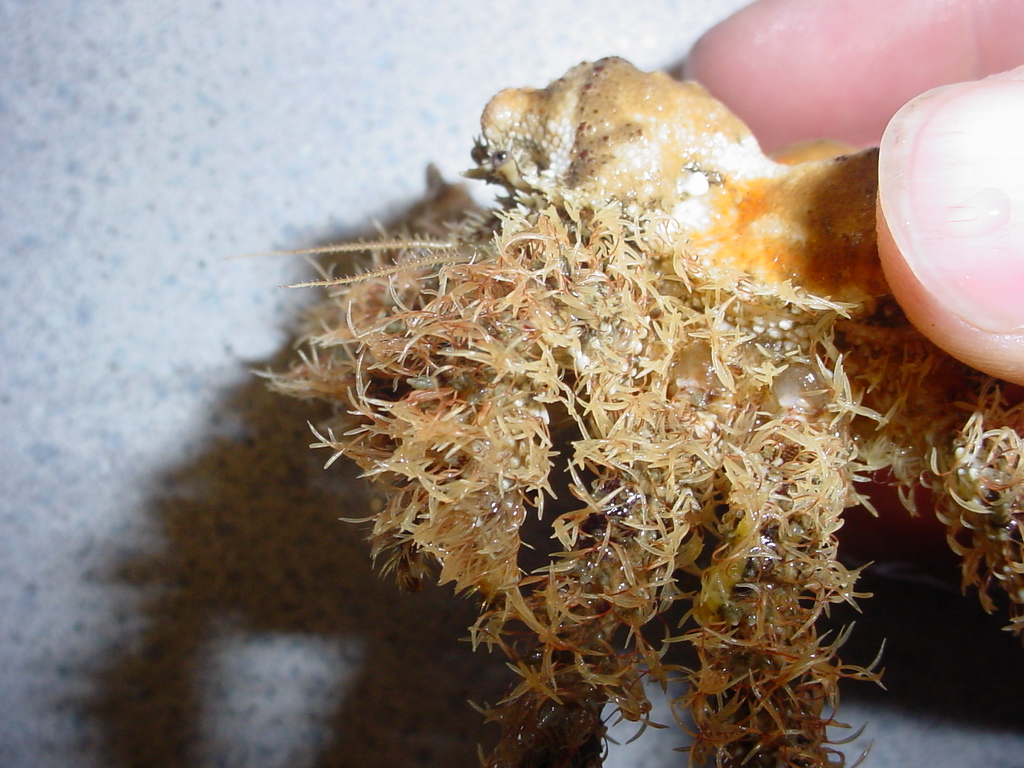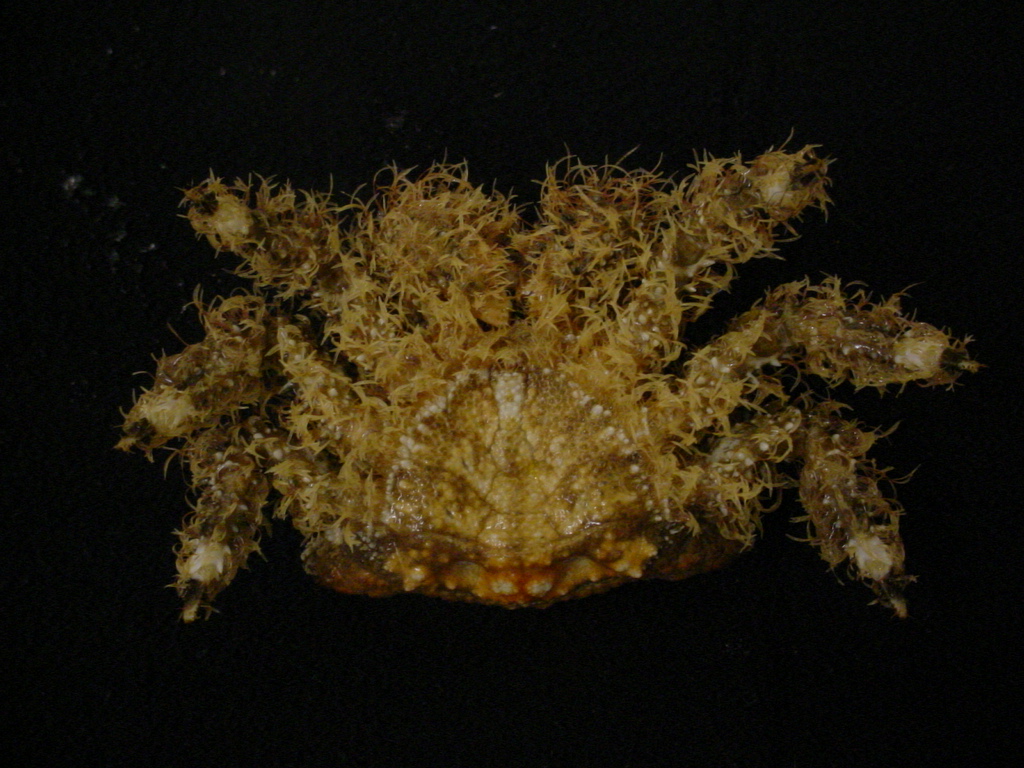Rhinolithodes wosnessenskii Brandt (1849)Common name(s): Rhinoceros crab |
|
| Synonyms: |  |
| Phylum Arthropoda
Subphylum Crustacea Class Malacostraca Subclass Eucarida Order Decapoda Suborder Pleocyemata Infraorder Anomura Family Lithodidae |
|
| Rhinolithodes wosnessenskii approx 7 cm across carapace, captured by SCUBA off Sares Head August 2004 See below for more photos. | |
| Photo by: Dave Cowles August 2004 | |
How to Distinguish from Similar Species: The only other local Lithodid crab with a triangular carapace is Phyllolithodes papillosus (the heart crab). It differs from that species in that P. papillosus has fewer, stiff blunt spines on the legs and few hairlike setae on the legs, has a rostrum of two blunt lobes, and the dorsal concavity of the rostrum is more strongly divided into a left and a right depression bordered by large tubercles.
Geographical Range: Kodiak, Alaska to Crescent City, CA
Depth Range: 6-73 m
Habitat: Rock or gravel bottoms, often hiding in crevices.
Biology/Natural History: Not often found in most areas of Puget Sound/Straits (though this species is often found on Sares Head). Slow-moving. Interestingly, even the back of the eyestalks have small spines (picture)
| Return to: | |||
| Main Page | Alphabetic Index | Systematic Index | Glossary |
References:
Dichotomous Keys:
Coffin,
1952
Flora and Fairbanks, 1966
Hart, 1982
Kozloff 1987, 1996
Wicksten, 2009
General References:
Jensen,
1995
Scientific Articles:
General Notes and Observations: Locations, abundances, unusual behaviors, etc.:

The anterior margin of the carapace is covered with sharp spines (see at the base of the hairy legs)

The rostrum has a single hornlike spine, visible from the side

The abdomen is held tightly against the underside of the thorax. The chelipeds are covered with hairlike setae, as are the rest of the legs.
Authors and Editors of Page:
Dave Cowles (2004): Created original page